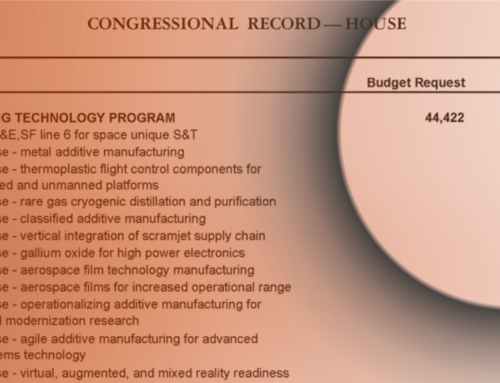The inner workings of how the House of Representatives passes legislation is a rock you might not want to kick over.
Goodness knows what will skitter out. In this case, it reveals unsavory shenanigans to funnel money to President Trump’s proposed border wall.
If we told you Congress might make the Pentagon pay for it, would that make sense to you? Because that’s what the House of Representatives has tried, on two recent occasions, to do. Spoiler alert: The way things stand right now $1.6 billion will be spent, from Homeland Security coffers, without the House of Representatives actually debating the issue and voting on it in any discrete way. But it’s been a long road to get to that point.
First, some background in federal law and precedent. Federal military troops are forbidden to engage in law enforcement actions – such as enforcing immigration law – by the long-standing posse comitatus prohibitions. (The National Guard is a different case, since its members are under the partial control of their state governors.) The federal agencies charged with protecting U.S. borders and enforcing immigration laws, like the Coast Guard and the Border Patrol, are in the Department of Homeland Security. And the president’s budget request for fiscal year 2018 includes just over $44 billion for the department. But any wall is going to be expensive, and a departmental budget of “only” $44 billion might be squeezed by the expense.
Unfortunately, Washington’s response to any spending need seems to be “Get the Pentagon to pay for it.” Why? It seems to be a testament to Willie Sutton’s reason for robbing banks: “Because that’s where the money is.” The Pentagon, with a total proposed budget of $639 billion ($574 billion in base budget and $65 billion in special “war” accounts), is where lawmakers can find the money for anything.
The House Armed Services Committee version of the annual Pentagon policy bill included a common-sense provision to make sure the Pentagon isn’t tasked with paying for the wall: “Section 1039. Rule of construction regarding use of Department of Defense funding of a border wall. None of the funds authorized to be appropriated by this act or otherwise made available for the fiscal year 2018 for the Department of Defense may be used to plan, develop or construct any barriers, including walls or fences, along the international border of the United States.”
A careful reading of this language (and that’s what we do at Taxpayers for Common Sense) points out this is a fairly broad prohibition. The armed services committees don’t ultimately control how federal dollars are spent. That role falls to the appropriations committees. But by saying “or otherwise made available … for the Department of Defense,” the House Armed Services Committee was foreclosing the possibility of spending any Pentagon money on this wall.
That was the plan. And at Taxpayers for Common Sense, we supported the idea.
Enter the House Rules Committee. A little known congressional powerhouse, the Rules Committee is also called the speaker’s committee. As the committee website says, “because it is the mechanism that the speaker uses to maintain control of the House floor.”
The Pentagon policy bill, HR 2810, needed a “rule“” to allow for the consideration of potentially hundreds of amendments on the House floor. And this is where we’re going to step off the cliff into the inner workings of the House, as promised above.
An amendment was offered to strike Section 1039. That means Pentagon money could be spent to construct a border wall. In the normal process of things, this amendment would have been accepted by the Rules Committee and then debated and voted on by the full House of Representatives. But nothing about this amendment can be called normal.
The Rules Committee took this one amendment and labeled it, “proposed to be adopted.” In the arcana of House rules, this means that voting for the rule governing consideration of the bill was also voting for this amendment. This is known as a “self-executing rule.”
On the House floor, the vote on the full rule passed. That means Pentagon money could be used to construct a border wall. Talk about governing under the cover of darkness.
But the House wasn’t done yet.
On the heels of the Pentagon policy bill was the “Making America Secure” combined appropriations bill. This bill represents roughly two-thirds of the total federal discretionary budget and funds the Departments of Defense, Veterans Affairs, and Energy as well as costs of the Legislative Branch of government. And an amendment was offered to fund the first tranche of the border wall from Pentagon money. And, again, it was to be made part of a “self-executing” rule. More shenanigans.
To register our outrage over this parliamentary maneuver, we wrote a letter to all House Members saying lawmakers should vote on this border wall spending – up or down – rather than hiding behind parliamentary gimmicks. We also argued the Pentagon budget, massive as it is, should not be used to pay for items outside its area of responsibility.
Our letter worked, in part. Although $1.6 billion in funding for the border wall was part of a self-executing rule, the amendment was revised to specify that the money must be from the Department of Homeland Security budget, a partial win.
At Taxpayers, we have tracked border spending for over a decade, and have been dismayed at the oversimplification and absence of facts that have characterized the discussion of the wall in recent months. And while we believe there are better ways to secure the nation than additional construction along the southern border, we know many people feel strongly that the wall should be a high priority. But that is precisely the point: decisions about spending – particularly of such matters of controversy – should be openly debated and made in the light of the day. Transparency and accountability is critical to preventing waste, be it political inertia, ideological pressure, or corruption. So we’ll keep shining a light on wasteful spending and parliamentary procedures that attempt to obscure the facts from the taxpayers.













Get Social